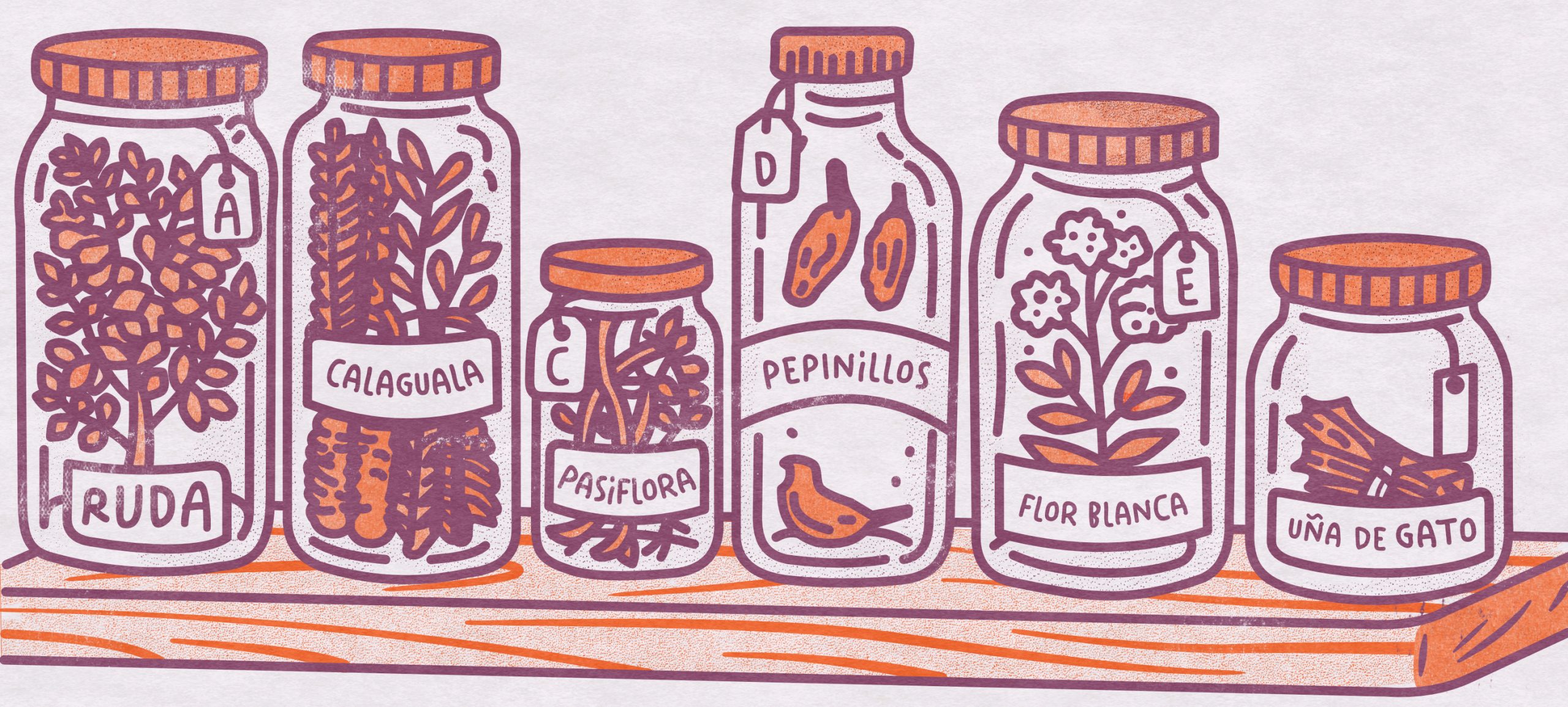This is a field note part of Fragmented Ecologies.
Every week at Samper Mendoza, I return to the same stalls and yet find new plants, new names, and new configurations. The market never repeats itself. This time, I began classifying—not scientifically, but fragmentographically. I selected six specimens: flor blanca, ruda, pepinillos, uña de gato, calaguala, and pasiflora. Each one moved between uses, textures, and moods, refusing to stay still long enough to be correctly defined.
Instead of organizing them by species, I tried to follow their ontological states. Some were living simulacra, still green and fragrant. Others were suspended remains, dried but preserved. And some had already become transformed remnants—powdered, bundled, or crumbled. These were not categories of knowledge but of relation: the ways matter carries memory, smell, and touch.
I limited the exercise to six plants for practical reasons. They were the ones I could consistently find across different stalls and that represented distinct material states: dried leaves and fruits (flor blanca, pepinillos), living or recently cut plants (passiflora, ruda), and roots (uña de gato, calaguala). Together they formed a small ecology of textures—powdered, brittle, humid, fibrous—allowing me to observe how different forms of vegetal life persisted, transformed, and interacted within the market’s nocturnal rhythm. These six became my working specimens: manageable, comparable, and alive in their own ways.

I began writing small specimen cards that mixed observation and fiction—calling ruda a “protector,” pepinillos a “disruptor,” and passiflora a “serenifolia,” a soother of nerves. These poetic classifications are not meant to replace botanical ones; they expose how naming is also sensing, how classification can be affective. Each label became a miniature story, a way of describing what a plant does rather than what it is.
This exercise reminded me that the herb market is itself a taxonomy in motion—its categories overlap, drift, and contradict one another. To classify here is to listen, smell, and risk uncertainty. Fragmentography, in this sense, is not a method of ordering but of staying with the shifting life of fragments.
Taxonomic drift
This month, the fieldnotes turned into cards. Each card is a misclassification. Each misclassification is a clue.
At Samper Mendoza, plants slip between names, uses, and moods. I started tracing their drift through small acts of sorting—playing with categories that seemed to emerge on their own, spoken in half-phrases by vendors and clients. The result is not a table of truths but a field of resemblances, where classification behaves more like weather than order.
| Class | Description | Specimens |
|---|---|---|
| Spiritifugales | Repel invisible moods | Ruda, flor blanca |
| Serenifoliae | Induce soft sleep | Pasiflora, calaguala |
| Purificatoriae | Cleanse by bitterness | Ruda, pepinillo |
| Restituentes | Restore body, slow repair | Uña de gato, calaguala |
| Noctilucidae | Active after midnight | Ruda, pasiflora |
| Volatiles | Work through scent alone | Flor blanca, ruda |
| Rootbinders | Connect organs to earth | Uña de gato, calaguala |
| Disruptors | Provoke expulsio | Pepinillo, ruda |
| Echoforms | Multiply by repetition | Pasiflora, pepinillo |
| Tidemarks | Leave healing traces after decay | Calaguala, pepinillo |
| Frigidae | Cool nerves and overheated hearts | pasiflora, flor blanca |
| Calorata | Raise circulation and will | Ruda, pepinillo |
| Liminales | Shift between medicine and rituals | Flor blanca, ruda, pasiflora |
| Quiet Agents | Heal through silence | Uña de gato, calaguala |
| Shortwave | Brief and sharp in effect | Pepinillo, ruda |
| Longwave | Slow, lasting, embodied | Calaguala, uña de gato |
| Revenants | Reactive by telling | Pasiflora, flor blanca |
| Drifters | Change category constantly | All six |
No single name holds. Categories dissolve into one another, as if the herbs were whispering their own arrangements. These fragmentary classifications emerged slowly—from late-night exchanges, overlapping diagnoses, and the gentle corrections of vendors who spoke of ruda as “guardian,” passiflora as “lullaby,” and pepinillo as “purgative joke.” The chart is not a system; it’s a record of conversations. Each line is a remnant of dialogue—a taxonomy assembled from voices, gestures, and plants that refused to stay still.

